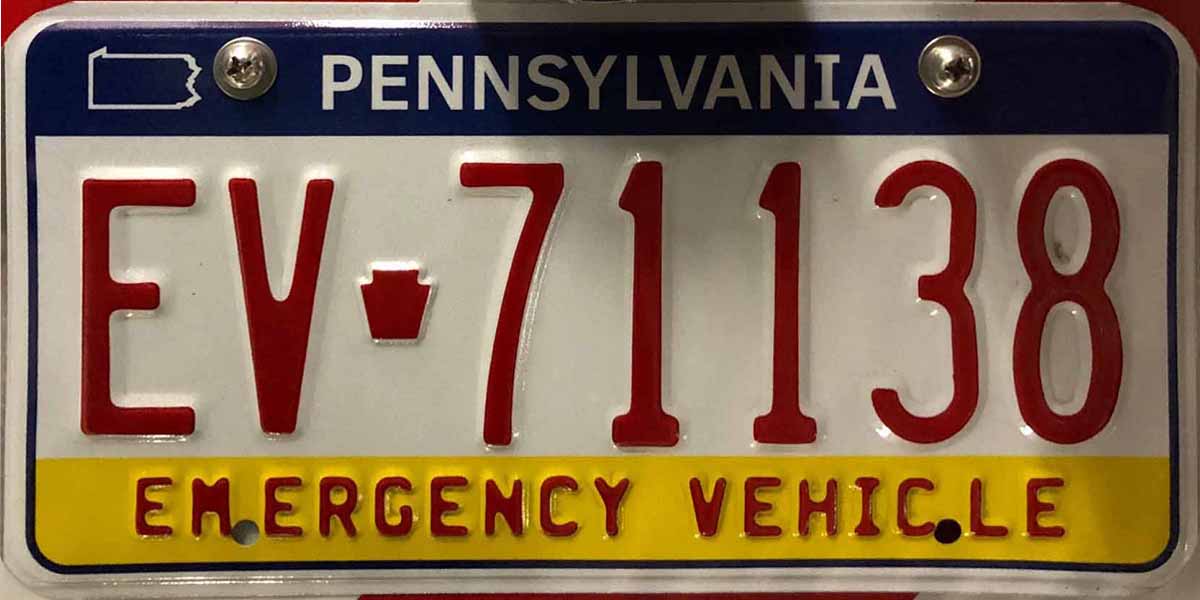License Plate Design: Pennsylvania License Plates
Pennsylvania license plates are a standard size of 6 inches (152 mm) tall and 12 inches (305 mm) wide. The plates are made of aluminum and have a reflective white background. The state name “PENNSYLVANIA” is printed in blue at the top of the plate, and the county name is printed in black at the bottom.
The license plate design has changed several times over the years. The first license plates were issued in 1906 and were made of porcelain. The plates were black with white lettering and numbers. In 1910, the plates were changed to a white background with black lettering and numbers. The state name was added to the top of the plate in 1913, and the county name was added to the bottom of the plate in 1915.
Pennsylvania license plates are a unique and distinctive way to represent the Keystone State. They feature a variety of designs and colors, including the classic blue and white plate. For more information about pennsylvania license plate , visit our website.
Pennsylvania license plates are a great way to show your state pride and support.
In 1956, the license plates were changed to a reflective white background with blue lettering and numbers. The state name was printed in blue at the top of the plate, and the county name was printed in black at the bottom. This design is still used today, with some minor changes.
Pennsylvania license plates have a long and storied history, dating back to the early days of the automobile. Today, they are a common sight on the roads of the Keystone State. But did you know that there is a connection between Pennsylvania license plates and nj license plate ?
It’s true! The two states have a long history of cooperation on transportation issues, and this has extended to the design of their license plates.
Special Editions
In addition to the standard license plate, Pennsylvania also offers a number of special edition plates. These plates feature different designs and colors, and they are often used to support specific causes or organizations.
- The “Choose Life” plate features a blue background with white lettering and numbers. The plate supports the Pennsylvania Pro-Life Federation.
- The “Support Our Troops” plate features a red, white, and blue design with the words “Support Our Troops” printed across the top. The plate supports the Pennsylvania Military Support Fund.
- The “Wildlife Conservation” plate features a green background with a white deer silhouette. The plate supports the Pennsylvania Game Commission.
License Plate Issuance and Regulations

In Pennsylvania, obtaining a license plate involves following a specific process that ensures compliance with state laws and regulations. Understanding the requirements, types, and regulations associated with license plates is crucial for vehicle owners.
To obtain a license plate, individuals must visit their local Pennsylvania Department of Transportation (PennDOT) office. The process typically involves providing proof of vehicle ownership, insurance, and payment of applicable fees. Fees may vary depending on the type of license plate requested.
Types of License Plates
Pennsylvania offers a range of license plate options to meet the needs of different vehicle owners. These include:
- Standard Plates: Issued to all registered vehicles, displaying a unique combination of numbers and letters.
- Vanity Plates: Allow owners to personalize their plates with a custom combination of letters and numbers, subject to availability and restrictions.
- Personalized Plates: Similar to vanity plates, but with the added option of incorporating images or designs.
Regulations and Display
The use and display of license plates in Pennsylvania are governed by specific laws and regulations. These include:
- Display Requirements: License plates must be displayed on the front and rear of vehicles in a visible and legible manner.
- Obscuring Plates: Covering or obscuring license plates is prohibited, including the use of tinted covers or frames.
- Tampering: Altering or modifying license plates in any way is a serious offense.
- Lost or Stolen Plates: Vehicle owners are required to report lost or stolen plates promptly to PennDOT.
License Plate Identification and Tracking

Pennsylvania license plates play a crucial role in identifying vehicles and their owners. Each license plate is assigned a unique combination of numbers and letters that serves as a distinct identifier for the vehicle. These license plates are used by law enforcement agencies to identify vehicles involved in traffic violations or criminal activities.
In addition to visual identification, Pennsylvania has implemented various methods to track and locate vehicles through their license plates. These methods include:
Automated License Plate Recognition (ALPR)
ALPR technology utilizes cameras to capture images of license plates and automatically extract the plate numbers. This data is then processed by a central database, which compares the plate numbers against records of stolen vehicles, outstanding warrants, or other relevant information. ALPR systems are commonly used by law enforcement agencies to monitor traffic, identify stolen vehicles, and apprehend suspects.
License Plate Readers (LPRs)
LPRs are devices that are mounted on vehicles, such as police cruisers or traffic enforcement vehicles. These devices scan license plates and transmit the data to a central database for real-time processing. LPRs are particularly useful in high-traffic areas, where they can quickly identify vehicles of interest and assist law enforcement officers in apprehending suspects or enforcing traffic laws.
License Plate Databases, Pennsylvania license plates
Pennsylvania maintains a comprehensive database of license plate information, which includes the plate number, vehicle make and model, owner information, and registration details. This database is used by law enforcement agencies to track stolen vehicles, investigate accidents, and locate vehicles involved in criminal activities.